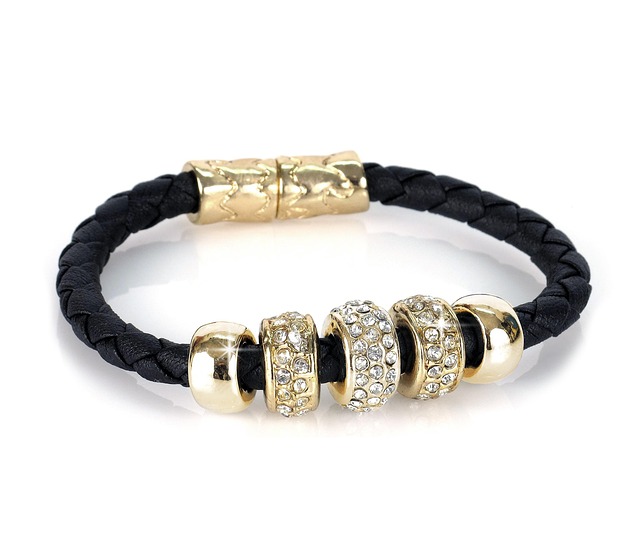Gifting solutions: how to choose sizes and handle exchanges
Choosing wristwear as a gift involves more than style: fit, material, and exchange options all matter. This piece outlines clear measuring methods, material considerations like alloy or leather, clasp and adjustability choices, personalization limits, and maintenance guidance to reduce sizing issues.

Selecting a bracelet for someone else can feel uncertain, but practical preparation reduces stress. Start by learning simple measuring tricks, check common clasps and adjustability features, and note material-specific care for alloys, leather, or beads. Also consider personalization limits like engraving and charms, hypoallergenic choices, and the seller’s exchange and repair policies so the recipient can adjust fit without losing the gift’s intended meaning.
Wristwear sizing and measuring
Accurate sizing begins with a consistent method. Use a soft cloth tape or a strip of paper wrapped at the base of the wrist where a bracelet would sit; mark the overlap and measure it against a ruler. For a closer fit add about 0.5–1 cm (¼–⅜ inch); for a looser fit add 1–2 cm (⅜–¾ inch). Wide cuffs or heavy beadwork require extra allowance because they don’t rotate easily. If you cannot measure, borrow a bracelet the recipient already wears and compare its inner circumference to a sizing chart. Record the measurement and fit preference in a note for the recipient or the retailer to streamline any exchange.
Clasp types and adjustability
Clasp design affects wearability and how easy it is to alter size. Common options include lobster and spring-ring clasps, which are secure but can be fiddly; toggle and magnetic clasps are simpler to use but vary in reliability; sliding knots and extenders provide built-in adjustability. When gifting, favor pieces with removable links, chain extenders, or sliding elements because they accommodate minor size changes without professional resizing. Also check whether the clasp can be repaired or replaced locally—this makes post-gift adjustments straightforward and reduces the need for full exchanges.
Materials: alloy, leather, beads
Material choice informs comfort, care, and longevity. Metal alloy pieces are versatile and often budget-friendly, but finishes can tarnish or wear off—look for clear plating information. Leather straps break in and become more comfortable with use but need conditioning and are susceptible to water damage. Beaded wristwear depends on the cording method: elastic allows some stretch but may need restringing over time, while wire or thread offers durability but less give. Note material properties on the gift tag so the recipient knows how to avoid shrinkage, tarnish, or weakened threading that could lead to repairs or exchanges.
Personalization: engraving and charms
Personal touches like engraving or charms increase sentimental value but can limit exchange options. Engraving is often permanent; verify the seller’s return policy for customized items before ordering. Charms attached by jump rings or clips can be removed, making the base bracelet easier to exchange if needed. If you plan engraving, choose placements (inside a clasp plate or on a small tag) that are less likely to be affected by resizing. Keep documentation of any customization and the vendor’s exchange rules with the gift so the recipient can pursue resizing or swaps if necessary.
Hypoallergenic options and maintenance
Skin sensitivity is a practical concern. Opt for hypoallergenic metals like surgical stainless steel, titanium, or pieces explicitly labeled nickel-free if allergies are possible. Leather dyes and finishes sometimes irritate sensitive skin, so ask about tanning methods or alternative linings. Maintenance varies: polish plated metals sparingly, condition leather to prevent drying, and inspect beaded strings for fraying. Including a short care note with the gift helps recipients avoid damage that could require an exchange, and clarifies whether routine wear or a manufacturing fault should trigger a return.
Travel, sustainability, and traceability
If the recipient travels frequently, choose low-profile designs and secure clasps to reduce snagging; adjustable pieces accommodate wrist swelling during long trips. Sustainability and traceability are growing priorities: vendors that disclose alloy sources, leather tanning practices, or bead origins support more responsible gifting. Seek sellers offering repair services or clear provenance to extend a piece’s life and simplify post-gift adjustments. Providing the recipient with vendor contact information and repair options reduces friction when exchanges or resizing are needed.
Careful measurement, adjustable designs, clear documentation on materials and customization, and an understanding of return policies make gifting wristwear smoother for both giver and recipient. Prioritizing hypoallergenic materials and simple adjustability helps the piece fit well from the start, while clear care notes and vendor contacts ease any future exchanges or repairs, preserving the sentiment behind the gift.






